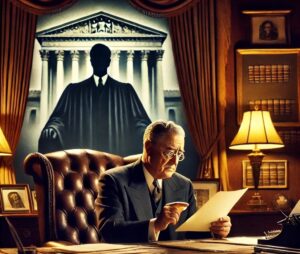1937 was a defining year for President Franklin D. Roosevelt, who found himself at odds with the very institution meant to interpret the laws of the land—the U.S. Supreme Court. Frustrated by the Court’s repeated rulings against key elements of his New Deal policies, Roosevelt proposed a radical solution: expanding the number of justices to up to fifteen, allowing him to appoint new judges more sympathetic to his vision. This so-called “court-packing plan” sparked a fierce national debate over executive power, judicial independence, and the delicate balance of democracy.
At the heart of the controversy was Roosevelt’s desire to push forward economic recovery programs aimed at pulling the nation out of the Great Depression. However, the conservative-leaning Supreme Court had consistently struck down these efforts, ruling them unconstitutional. FDR framed his plan as a way to modernize the judiciary and reduce its workload, but critics saw it as a blatant power grab that threatened the foundation of American democracy. Even some of his staunchest allies in Congress balked at the proposal, fearing it set a dangerous precedent where future presidents could manipulate the Court for political gain.
The backlash was swift and severe. Many Americans, including members of FDR’s own party, accused him of undermining the separation of powers. The Senate ultimately rejected the plan, but the battle was not a complete loss for Roosevelt. The controversy pressured the Court to soften its opposition to New Deal legislation, and soon after, key rulings upheld programs like Social Security and labor protections. This shift, often referred to as “the switch in time that saved nine,” helped preserve the New Deal without altering the Court’s structure.
While Roosevelt’s court-packing plan failed, its impact rippled through American history. It underscored the limits of presidential power, reinforced the independence of the judiciary, and sparked conversations about constitutional reform that continue to this day. The episode remains a powerful reminder of the delicate checks and balances that define American governance and the political risks of pushing them too far.

